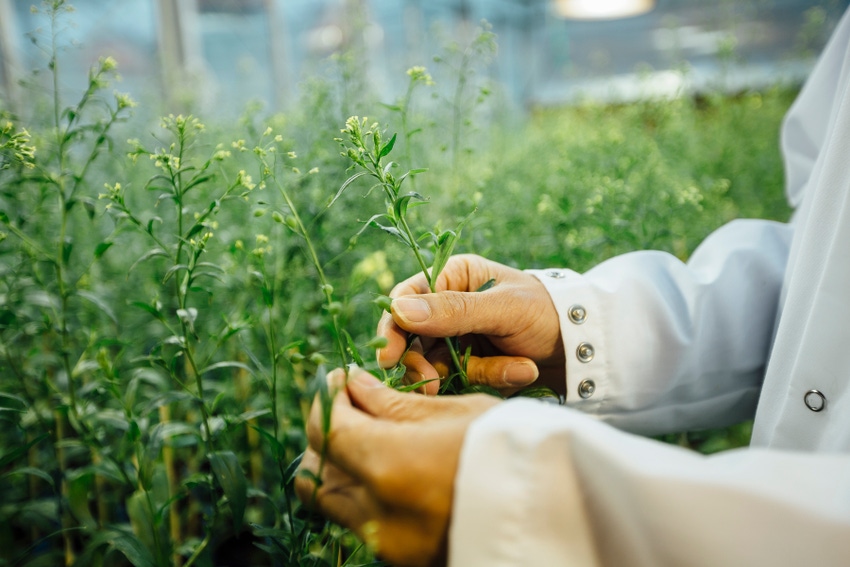DOE grants $1.2 million to research ways to improve usefulness of camelina, a potential source of alternative fuel.
January 19, 2017

A Montana State University scientist has received a $1.2 million grant from the U.S. Department of Energy’s Office of Science to research ways to improve the usefulness of camelina, an ancient crop that the modern world has come to value as a potential source of alternative fuel.
The project was one of seven totaling $7.8 million that were jointly selected by DOE and the U.S. Department of Agriculture to fund bio-based fuel research.
The grant will allow Chaofu Lu, associate professor in the department of plant sciences and plant pathology in Montana State’s College of Agriculture, to study ways to improve the crop’s seed and oil quality.
Lu, working with John Browse, professor at the Institute of Biological Chemistry at Washington State University, seeks to answer two questions with the federal grant. “We’re going to try to understand the genetic mechanisms and find factors we could use for the breeding,” Lu said.
First, the idea is to selectively breed for larger camelina seeds. Typically, they are about the size of sesame seeds, but smaller seeds are less efficient for processing because there’s not enough oil relative to the husk and rest of the seed.
Second, Lu wants to improve the quality of the oil coming from the seeds. Right now, camelina oil is too high in unsaturated fat and could render oil that is prone to oxidation and spoilage. The goal of the grant work is to make the oil more like olive oil — to increase its proportion of oleic acid from about 15% naturally to some 80%.
Lu, an oilseed molecular geneticist who began researching camelina in 2005, said even over the decade he has been working on it, the crop has gone from a relative unknown to an almost ubiquitous research topic.
“It’s an emerging crop,” he said. “The Romans grew it, but somehow, it became minor (and was) almost gone by World War II. It emerged again in the '70s because of the oil crisis.”
One reason its popularity has grown, he said, is that camelina has a relatively short life span. Combined with being robust — it resists drought, cold weather and is relatively free of diseases — it’s also fairly easy to cultivate. That all makes camelina an effective crop on which to test ideas more quickly and easily than some other crops scientists use.
Chiefly, camelina is studied for its potential for biofuel production — the ability to refine the plant’s natural oils into combustible fuel. It’s a field where Lu said there is plenty of room for new research. “It’s an old crop, but not much has been done in terms of breeding,” he said.
While improving on nature’s design for camelina may help provide another renewable source of energy, it can also help farmers in other ways, Lu said, specifically by providing them with a rotational crop that could make farmers more money than other options. Camelina meal has also been studied as a protein ingredient for animal feed.
“If the oil price keeps going up and the environment deteriorates, more people will be looking for renewable fuels,” Lu said.
You May Also Like

.png?width=300&auto=webp&quality=80&disable=upscale)

